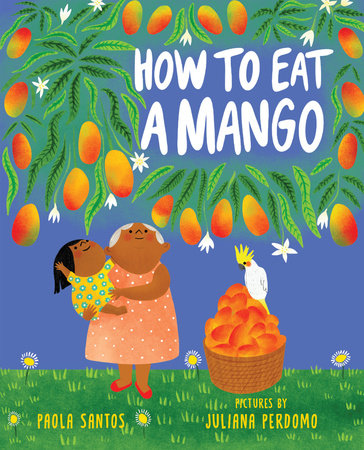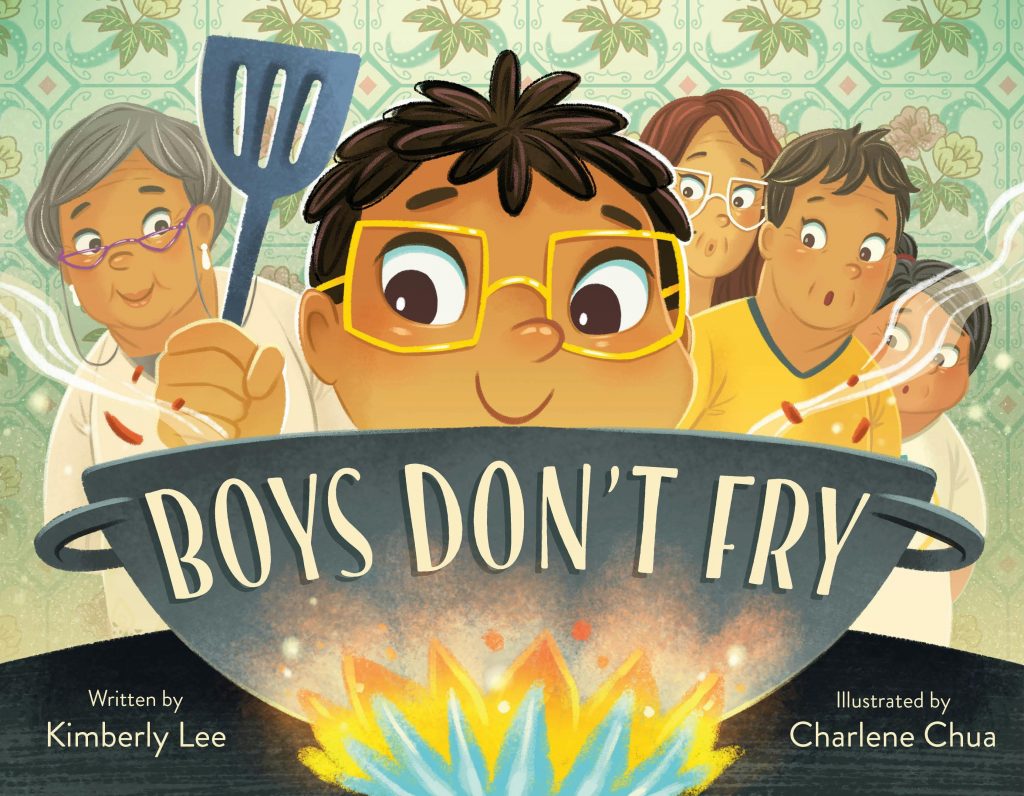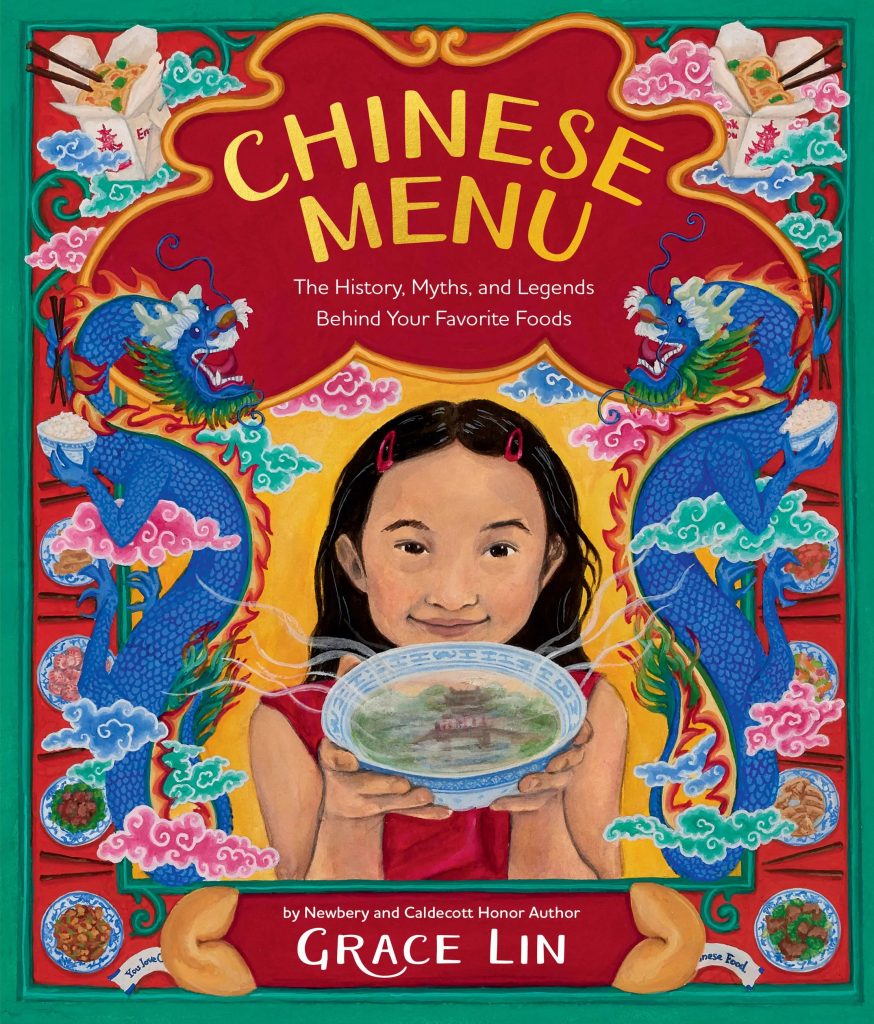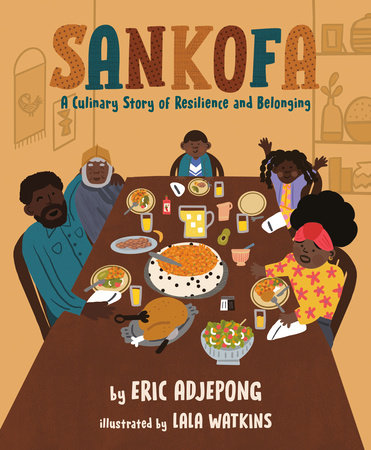By Kathy G. Short, University of Arizona, Tucson, AZ
 One of the most interesting (and mouthwatering) trends in the 2024 recommended global books lists are books focused on the role of food within families, particularly related to memory and culture. Food connects children across generations to their families, serving as a source of comfort and a means of passing on cultural traditions. Food is also a source of hope in times of despair and can invite cross-cultural connections and relationships.
One of the most interesting (and mouthwatering) trends in the 2024 recommended global books lists are books focused on the role of food within families, particularly related to memory and culture. Food connects children across generations to their families, serving as a source of comfort and a means of passing on cultural traditions. Food is also a source of hope in times of despair and can invite cross-cultural connections and relationships.
The many roles of food within children’s lives are evident in four new picturebooks on mangoes set in different global cultures. Mango Memories by Sita Singh and Nabi Ali (2024) is set in India where a young girl is finally old enough to help harvest mangoes from her favorite tree. Each family member shares a favorite mango memory as they work, while the girl worries that she will not have a memory to add to the family lore. This book pairs well with How to Eat a Mango by Paola Santos and Juliana Perdomo (2024), in which a young Venezuelan girl dreads having to pick up the sticky mangoes that fall from a tree. Her Abuelita shows her how to appreciate the fruit by using her senses to listen, feel, smell, and see mangoes, and then finally to taste the joy of eating a mango. In Julie and the Mango Tree by Sade Smith and Sayada Ramdial (2023), a young Jamaican girl is on a quest to convince her favorite mango tree to share its delicious fruit. When the wind drops too many mangoes, Julie joyfully shares the fruit with her community. The Mango Tree/La mata de mango by Edel Rodriquez (2024) is a wordless book in which two boys spend their days playing in a mango tree until one day a storm sweeps one of the boys and the tree into unknown waters. The illustrator engages readers in a fantastical take on his childhood experiences as a Cuban immigrant.
Several picturebooks convey the significance of food within family relationships, especially with grandparents. In 100 Chapatis (Mascarenhas & Robinson, 2023), a boy makes 100 chapatis with his Indian grandfather while they anxiously await a baby sibling’s arrival. In Banana Dream (Namir & Faidhi, 2023), an Iraqi boy hates his name, Mooz, which means banana in Arabic, until he learns the story of his name from his mother.
 Food often connects family members through the passing down of important cultural practices and traditions. In The Mochi Makers (Fujimoto-Johnson, 2024), a Japanese girl and her mother spend the day making mochi from a recipe passed down for generations, while in The Spice Box (Sriram & Prabhat, 2024), Rishi is cooking curry with his Indian father when he breaks the family spice box which holds the family’s heart and history. Sometimes those traditions are challenged as in Boys Don’t Fry (Lee & Chua, 2023) in which a Peranakan Chinese boy challenges the belief of his aunties that boys can’t help with cooking for Lunar New Year.
Food often connects family members through the passing down of important cultural practices and traditions. In The Mochi Makers (Fujimoto-Johnson, 2024), a Japanese girl and her mother spend the day making mochi from a recipe passed down for generations, while in The Spice Box (Sriram & Prabhat, 2024), Rishi is cooking curry with his Indian father when he breaks the family spice box which holds the family’s heart and history. Sometimes those traditions are challenged as in Boys Don’t Fry (Lee & Chua, 2023) in which a Peranakan Chinese boy challenges the belief of his aunties that boys can’t help with cooking for Lunar New Year.
Food can also provide hope as well as memory. In Baba’s Peach Tree by Marie Tang and Seo Kim (2024), Tao and her father, a migrant worker, find hope in an old peach tree that provides for them in their rural home. When they are forced to move to the city to survive, they return many years later to find that the peach pits Tao planted as a child are now an abundant orchard.
 Two incredible memoirs for middle grade readers use food to organize family memories and cultural traditions. Family Style: Memories of an American from Vietnam is a graphic memoir by Thien Pham (2023) in which he uses food and meals to chronicle his life from a childhood in Vietnam and a refugee camp in Thailand to his search for belonging in the U.S. In Chinese Menu: The History, Myths, and Legends Behind Your favorite Foods, Grace Lin (2023) celebrates Chinese cuisine and culture by combining personal memories, food customs and superstitions, folktales and visual images within sections on chopsticks, tea, appetizers, soup, main dishes and desserts.
Two incredible memoirs for middle grade readers use food to organize family memories and cultural traditions. Family Style: Memories of an American from Vietnam is a graphic memoir by Thien Pham (2023) in which he uses food and meals to chronicle his life from a childhood in Vietnam and a refugee camp in Thailand to his search for belonging in the U.S. In Chinese Menu: The History, Myths, and Legends Behind Your favorite Foods, Grace Lin (2023) celebrates Chinese cuisine and culture by combining personal memories, food customs and superstitions, folktales and visual images within sections on chopsticks, tea, appetizers, soup, main dishes and desserts.
Another set of picturebooks provide examples of food traditions that cut across cultures to make cross-cultural connections. In Empanadas for Everyone (Kramer & Wen, 2023), Carina visits her Tia to help make empanadas, realizing, as she interacts with neighbors, that they have related foods from their own cultures. This book could be compared to two from previous years. Dumplings for Lili (Iwai, 2021) has a similar plot about a girl borrowing ingredients to cook dumplings, baos, with her Nai Nai, finding that each neighbor has their own version of dumplings. Luli and the Language of Tea (Wang & Yum, 2022) focuses on children from many global cultures in an early childhood classroom who all share a love for tea across languages and traditions.
 Many schools have international potlucks where every child is invited to bring food that represents their family’s culture. In Sankofa: A Culinary Story of Resilience and Belonging (Adjepong & Watkins, 2023), Kofi is unsure about bringing Ghanaian food, feeling unconnected and embarrassed about those cultural traditions, until his grandfather takes him shopping and connects the food to their family’s history.
Many schools have international potlucks where every child is invited to bring food that represents their family’s culture. In Sankofa: A Culinary Story of Resilience and Belonging (Adjepong & Watkins, 2023), Kofi is unsure about bringing Ghanaian food, feeling unconnected and embarrassed about those cultural traditions, until his grandfather takes him shopping and connects the food to their family’s history.
These books draw in readers to food as a language of love within a family, often including recipes and integrating words in the family’s heritage language. The power of food as an intergenerational connection and the holder of memory and culture shines through in books that will leave readers with a desire to taste the sensory delights.
WOW Currents is a space to talk about forward-thinking trends in global children’s and adolescent literature and how we use that literature with students. “Currents” is a play on words for trends and timeliness and the way we talk about social media. We encourage you to participate by leaving comments and sharing this post with your peers. To view our complete offerings of WOW Currents, please visit its archival stream.
- Themes: 100 Chapatis, Andrea Wang, Baba's Peach Tree, Banana Dream, Boys Don't Fry, Charlene Chua, Chinese Menu, Daby Zainab Faidhi, Derek Mascarenhas, Dumplings for Lili, Edel Rodriquez, Empanadas for Everyone, Eric Adjepong, Family Style, Grace Lin, Hasan Namir, How to Eat a Mango, Hyewon Yum, Jackie Azúa Kramer, Juliana Perdomo, Julie and the Mango Tree, Kathy Short, Kimberly Lee, Lala Watkins, Lenny Wen, Luli and the Language of Tea, Mango Memories, Mango Tree/La mata de mango, Marie Tang, Meera Sriram, Melissa Iwai, Mochi Makers, Nabi Ali, Paola Santos, Sade Smith, Sandhya Prabhat, Sankofa, Sayada Ramdial, Seo Kim, Shantala Robinson, Sharon Fujimoto-Johnson, Sita Singh, Spice Box, Thien Pham
- Descriptors: Debates & Trends, WOW Currents
